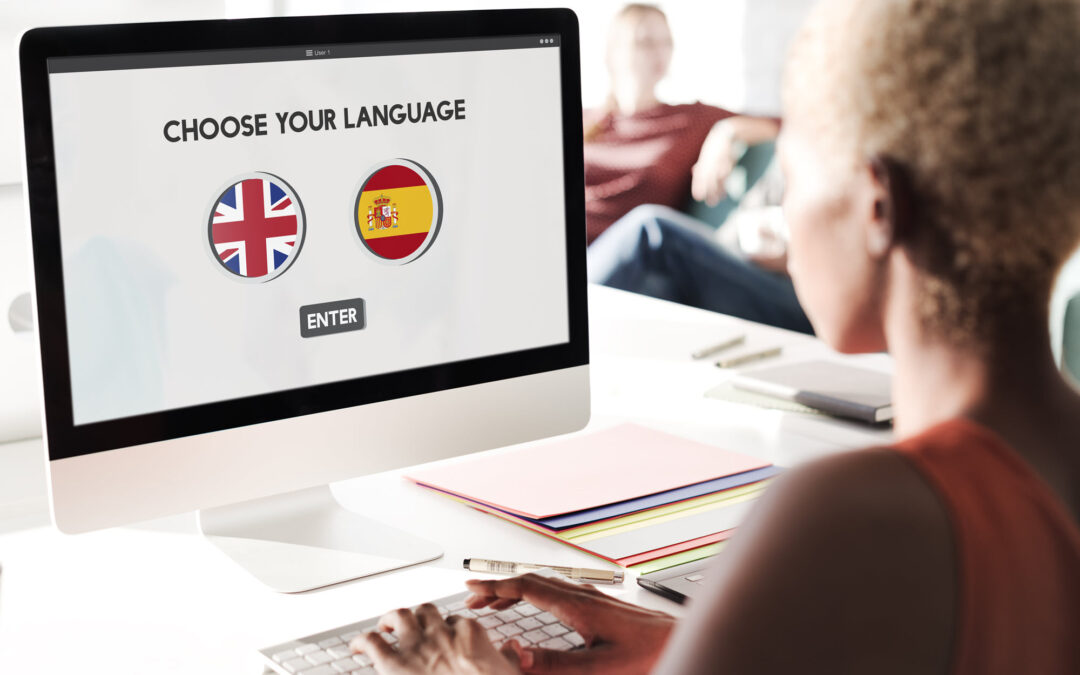Marked Improvement, Member of the Chamber, has written a post on learning and development (L&D) across borders for the Chamber’s blog. In this piece, they explore why cross-border L&D matters, the challenges involved, and how e-learning and localisation can make a big difference.
Blog post written by Chamber Member Marked Improvement
Learning and Development Across Borders: Co-ordinated Strategies for Companies in Spain and the UK
Businesses with significant operations in both Spain and the UK need to think strategically about learning and development (L&D). It’s no longer just about training people for their roles—it’s about building a shared culture, streamlining ways of working, and meeting different regulatory requirements. This blog explores why cross-border L&D matters, the challenges involved, and how e-learning and localisation can make a big difference.
Why Cross-Border L&D Matters
For UK and Spanish companies operating in both countries, having a joined-up approach to L&D brings plenty of benefits:
- A Shared Culture: Consistent training helps employees align with company values, goals, and expectations, no matter where they’re based.
- Smoother Processes: When everyone is trained in the same way, it cuts down on misunderstandings and inefficiencies.
- Better Compliance: Different countries have different rules, and good training makes sure employees know how to stick to them.
When done well, cross-border L&D can help businesses bring their people together, increase productivity, and even drive innovation.
Challenges of Cross-Border L&D
But let’s not pretend it’s easy. Cross-border L&D comes with its fair share of challenges:
- Cultural Differences: What works in the UK might not land the same way in Spain. Training needs to reflect cultural nuances to make it relevant.
- Language Barriers: Miscommunication can cause inefficiencies and lower productivity.
- Different Regulations: Health and safety rules, for example, vary between countries, so training must be adapted accordingly.
- Tech Differences: Teams in different places might have access to different tools or be less familiar with e-learning platforms.
And then there’s the “Not Invented Here” problem, where employees resist training that hasn’t been developed locally. If people don’t feel involved in the process, they’re less likely to engage with the content.
To take a real example, many UK companies are currently trying to respond to the new Worker Protection Act 2024 which came into effect on October 26th. This, as readers may well be aware, places a new duty on employers to take ‘reasonable steps’ to prevent sexual harassment in the workplace.
As a result, many of our UK clients are publishing new policies and procedures, as well as rolling out online courses.
Clearly, with such a sensitive topic, recognition of both the legislative and cultural differences between countries makes a co-ordinated approach to L&D more challenging, but that’s not to say it can’t be done.
E-Learning: A Smart Solution
E-learning has been a game-changer for cross-border L&D. Why? Because it’s scalable, flexible, and cost-effective.
- Scalable: You can roll out training to teams of any size, anywhere in the world.
- Flexible: Employees can access training whenever it suits them, even if they’re in different time zones.
- Cost-Effective: No need for expensive travel or venues.
Perhaps most importantly, e-learning can balance consistency with adaptability. You can create a standard framework and then tweak it for local needs, making it a perfect fit for companies with operations in both Spain and the UK.
And although the carbon savings associated with increased use of e-learning are subject to debate, there is little doubt that it does make a contribution towards Net Zero, particularly where providers make a commitment to switching to greener data centres.
The Importance of Translation and Localisation
Translation and localisation are key to making e-learning work across borders. Training delivered in an employee’s native language is much easier to understand—and more effective.
Take safety training as an example. Research by the Center for Construction Research and Training (CPWR – https://www.cpwr.com/) found that Spanish-speaking construction workers who took a safety course in Spanish became more aware of workplace hazards and improved their use of protective equipment.
It goes without saying that AI has a role to play in translation now. However, it’s important to recognise that if your content is either very technical, or nuanced, or safety-related, ‘real’ translation is still essential to get it right and avoid mistakes with potentially costly consequences.
It’s not just about making training easier to follow. Localisation also shows employees that their backgrounds and needs are valued, which can boost engagement and outcomes.
Imagine your UK operation is commissioning a new bespoke e-learning course on Information Security. If you also have a significant operation in Spain, it could well make financial sense to consider a localised / translated version of the same course for the Spanish workforce. This will certainly be cheaper than developing courses separately.
As an international or global business, your offices in the UK, Spain or elsewhere may have different learning platforms (Learning Management Systems, or LMSs) in place, but that needn’t prevent you from commissioning parallel versions of the same course. As long as the course is produced to one of the recognised technical standards (of which SCORM is almost universally adopted), your new courses should work on every platform.
Best Practices for Localised E-Learning
If you want your e-learning to work well across Spain and the UK, here are some tips:
- Map Your Languages: Find out which languages your employees speak and focus on those with the highest concentration. This might differ between departments.
- Respect Cultural Differences: Think about how cultural nuances could affect the way your training is received. Getting advice from a localisation expert at the start can save time and money later.
- Follow Local Rules: Make sure your training meets local compliance requirements. For example, health and safety regulations are likely to differ between Spain and the UK.
- Use a Glossary: Companies often have specific terms for their products, processes, and services. Make sure these are translated consistently to avoid confusion. A professional translation provider can help manage this.
With these steps, you can create e-learning that’s both standardised and tailored to local needs.
Next steps
For companies operating in both Spain and the UK, cross-border L&D is no longer a nice-to-have; it’s essential. Well-designed and localised e-learning helps bring teams together, boosts productivity, and ensures everyone works safely and efficiently.
If your business is ready to take its L&D – and e-learning in particular – to the next level, join us at our upcoming seminar at the Spanish Chamber of Commerce. We’ll dive deeper into the topic and share more insights on how to make cross-border training work.
Post written by:
Charles Shields, co-Founder and Director of SCCUK Member Marked Improvement E-learning Ltd, a specialist e-learning development company based in Derby and Barcelona. He has almost 30 years’ experience in the sector.
Andrew Schlich, Founder and Managing Director of Nottingham-based AST Language Services, a long-established provider of translation services to SMEs and large organisations across Europe.






